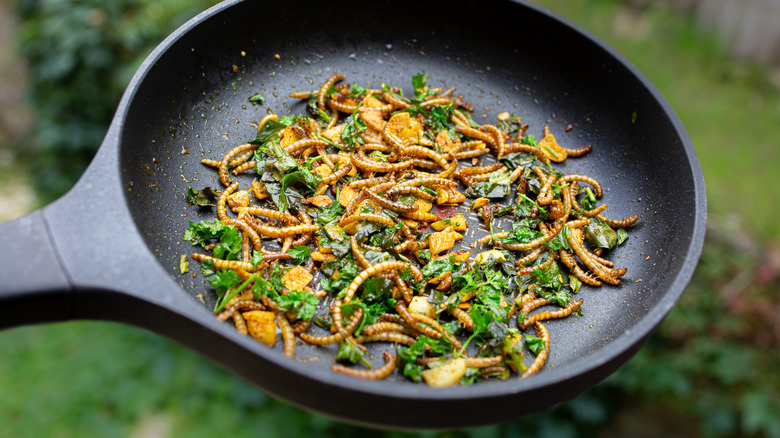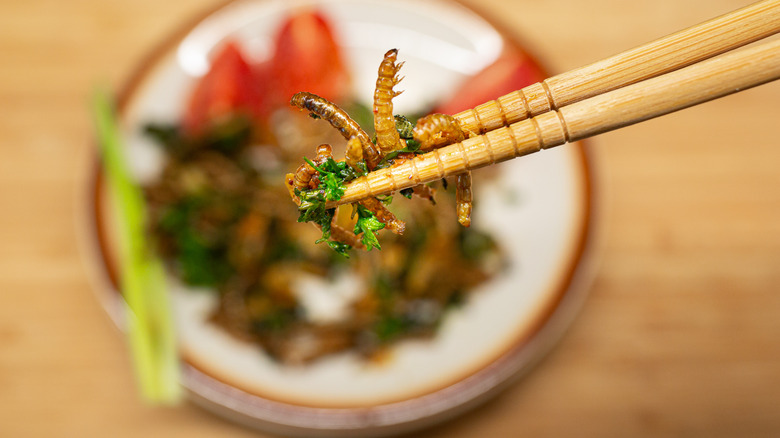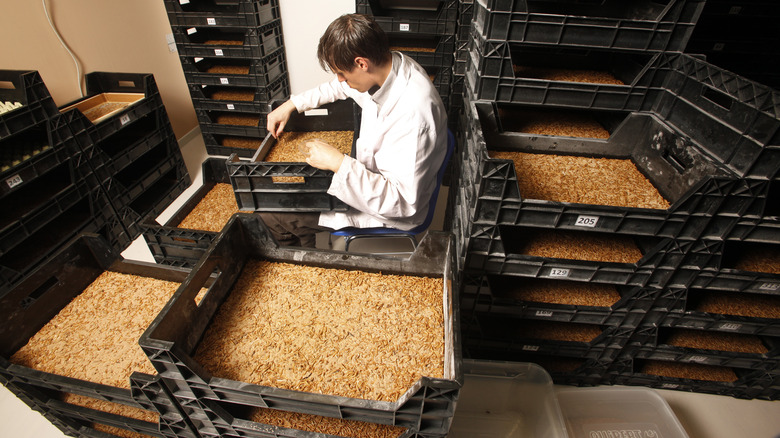How Entomophagy Has Become A More Accepted Practice Worldwide
While Westerners might balk at the tradition, entomophagy or the practice of eating insects is a cultural norm in several parts of the world; An estimated two billion people (a quarter of the world's population) consume insects on a regular basis. According to the Food and Agricultural Organization (FAO) of the United Nations, over a thousand different insect species are consumed in more than 80 countries in Asia, Africa, and Latin America.
Countries that practice entomophagy each have their own unique ways of eating bugs. In Thailand, insects like grasshoppers, crickets, and woodworms are fried until crispy and often sold in local food markets. When food is scarce, Ghanaians eat fried or roasted termites as a main protein source. Citizens of Mexico eat bugs in a variety of ways, such as fried, buttered, or coated in chocolate. Aboriginal tribes of Australia have been eating bugs like the honey-pot ant for centuries. Bugs have been consumed in China for thousands of years and are found on numerous restaurant menus as a delicacy, roasted larvae being among the most popular.
Japan also has a long history of entomophagy, with locusts, crickets, bee larvae, and silkworms being the most commonly consumed. A dish called inago no tsukudani, locusts simmered in soy sauce and sugar, is a specialty found in mountainous regions outside of Tokyo where access to seafood is limited.
The United Nations declares insects to be a sustainable protein source
In 2013, the FAO released a controversial report that touted entomophagy as a viable solution to the impending food shortages caused by the world's rapidly growing population. By 2050, it's predicted that the world's population will exceed 9 billion people; with the lack of land available for farming, overfished oceans, and the effects of climate change, new, sustainable ways to feed people are needed. This is where insect farming and consumption comes in, argues the FAO.
There are three reasons why eating insects should be promoted, according to the report. For one, insects are healthy and nutritious, being rich in protein, healthy fats, calcium, iron, and zinc. Secondly, raising farming insects is environmentally friendly since they emit considerably lower amounts of greenhouse gases than livestock and require less land and feed to raise. Lastly, raising these "mini-livestock" opens up economic possibilities for both rural and urban dwellers (due to the less required space) and is a low-tech, low-capital investment.
Food writer Michael Pollan pushes back a bit, saying that while these efforts are well motivated, entomophagy is not likely to catch on in the West. He told Fortune in an interview, "Insects might be the most sustainable animal protein, but food culture is powerful and there's a strong taboo that would have to be overcome." It would be better, he suggests, to feed these farm-raised insects to animals we already consume, like chicken and fish.
Insect farming and culinary efforts to reduce the ick factor
While still regarded with distaste in some parts of the world, the UN's report may have helped spur more mainstream appeal for entomophagy. According to Deutsche Welle (DW), a spokesperson for Gryllus Co., a food technology company in Japan developed in 2019 to raise crickets as a food source, "Crickets have long been eaten in Japan, and we see them as potentially an important and useful resource." Micronutris, another insect farm promoting the health and environmental benefits of entomophagy, raises edible bugs in France and sells specialty products such as chocolate, energy bars, and crackers made with mealworms or crickets.
For people who grow up being told bugs are dirty, creepy, and gross, getting over the "ick" factor associated with eating insects poses a challenge. Professional Chef and executive director of Brooklyn Bugs Joseph Yoon strives to dismantle the stigma attached to entomophagy and normalize insect consumption by creating delicious bug-based dishes that he serves at various events around the U.S. He encourages people to try incorporating bugs into their regular meals, not just for a one-time snack. He told Purdue University that, as a chef, he has to believe in what he's putting on the plate. "First and foremost, I try to create food that will be delicious. It will also happen to have bugs in it."


